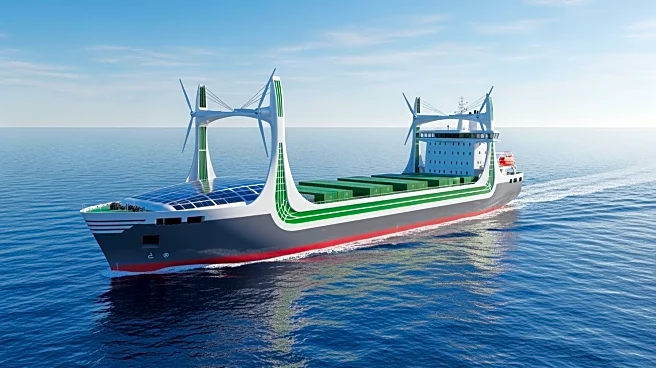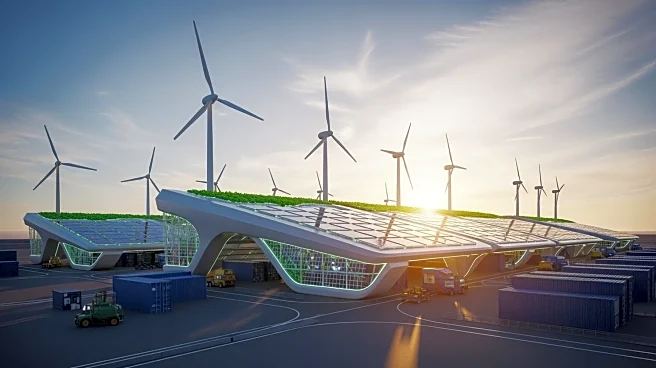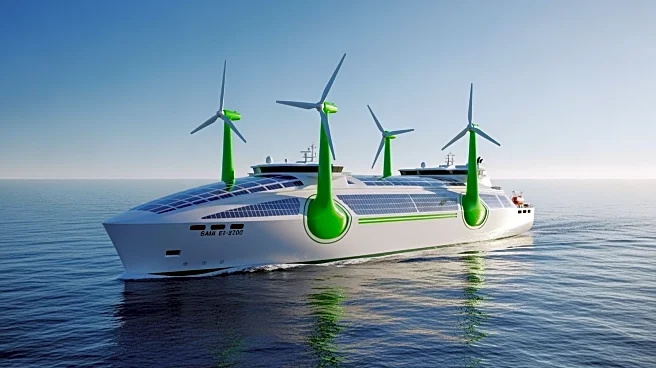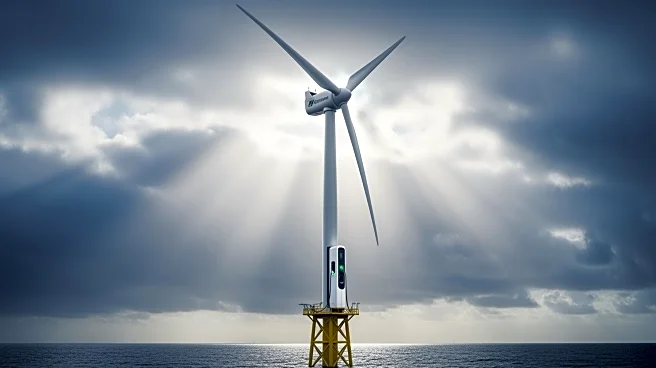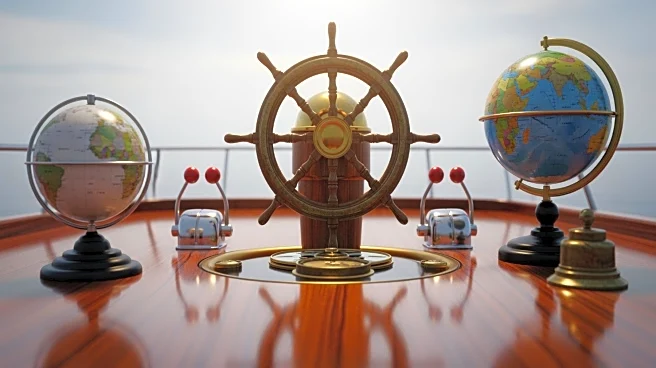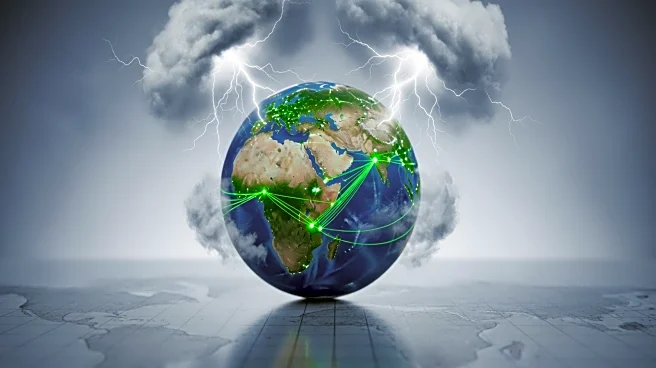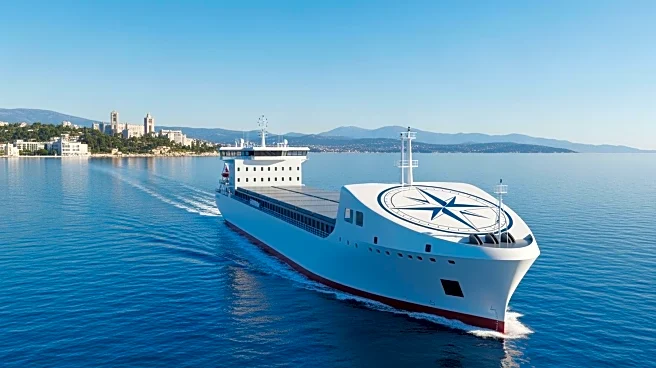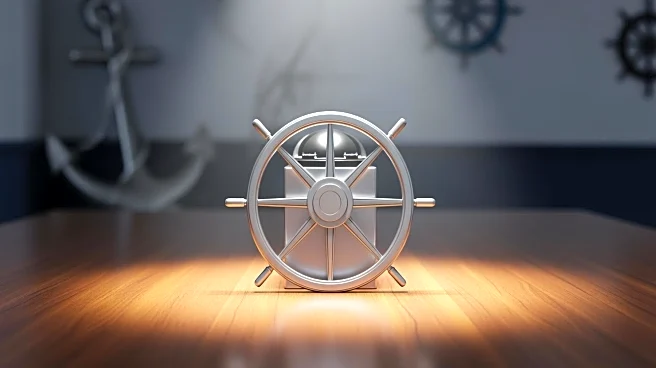What's Happening?
Major energy and commodity traders are actively investing in cleaner and more efficient shipping methods to meet the International Maritime Organization's (IMO) decarbonization goals. The IMO has set a target for a 40% reduction in shipping's carbon intensity
by 2030 compared to 2008 levels. Companies like BGN International and Vitol are leading the charge by modernizing fleets and retrofitting existing vessels. BGN International has added advanced gas carriers equipped with dual-fuel engines, while Vitol is implementing extensive retrofit programs to improve propulsion efficiency and reduce emissions. These efforts are complemented by Trafigura's investment in ammonia-powered ships, which are expected to be operational by 2028. The collaboration across the industry, including partnerships with shipbuilders and port authorities, is crucial for achieving these decarbonization targets.
Why It's Important?
The involvement of energy traders in the maritime industry's decarbonization efforts is significant as it brings substantial financial resources and market expertise to the table. This shift towards greener shipping practices not only helps the industry meet regulatory targets but also enhances the sustainability credentials of these companies. The reduction in emissions is crucial for combating climate change and aligns with global environmental goals. Additionally, the development of new technologies, such as ammonia-powered ships, could revolutionize the industry and pave the way for zero-carbon shipping. The collaboration between various stakeholders, including banks and maritime experts, highlights the importance of coordinated efforts in achieving these ambitious goals.
What's Next?
The maritime industry is expected to continue its transition towards lower emissions, with more companies investing in green technologies and practices. The successful implementation of ammonia-powered ships by Trafigura could set a precedent for other companies to follow suit. As the industry moves towards meeting the IMO's 2030 targets, further innovations and collaborations are likely to emerge. Stakeholders, including regulators and financiers, will play a crucial role in supporting these initiatives and ensuring that the necessary infrastructure and technologies are developed. The ongoing efforts to retrofit existing vessels and build new ones with cleaner fuel capacities will be key to achieving a sustainable future for shipping.
Beyond the Headlines
The push for decarbonization in shipping has broader implications for global trade and environmental policy. As shipping becomes more sustainable, it could lead to changes in trade routes and logistics, impacting global supply chains. The adoption of new technologies, such as ammonia as a marine fuel, raises questions about safety and regulatory standards, which will need to be addressed. Furthermore, the industry's shift towards sustainability could influence other sectors to adopt similar practices, contributing to a wider cultural shift towards environmental responsibility.
